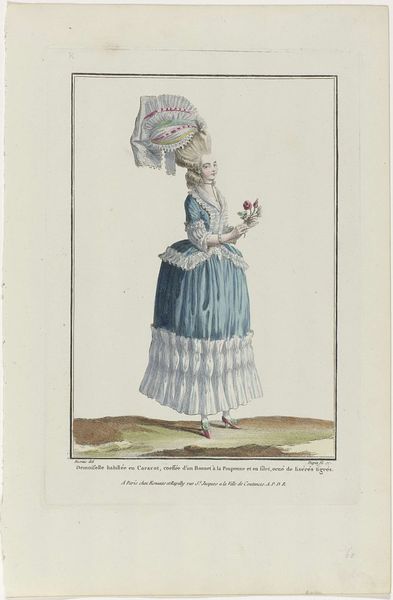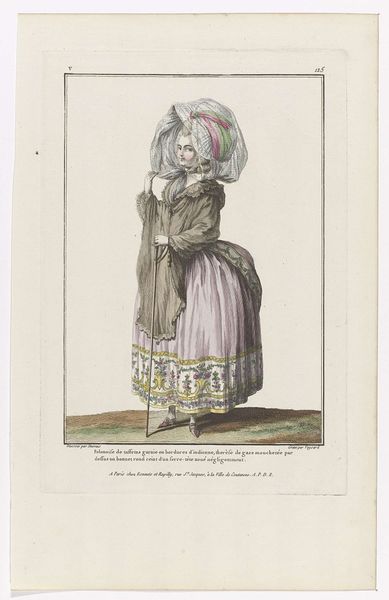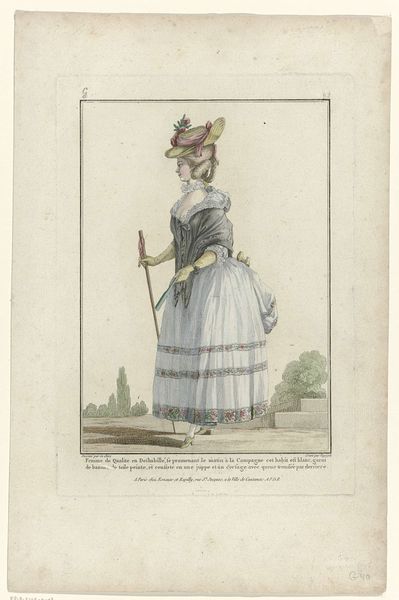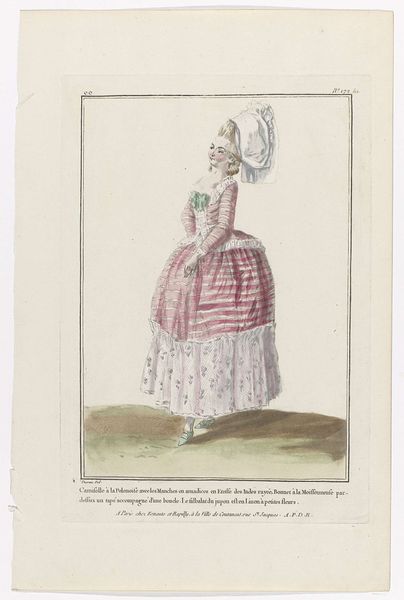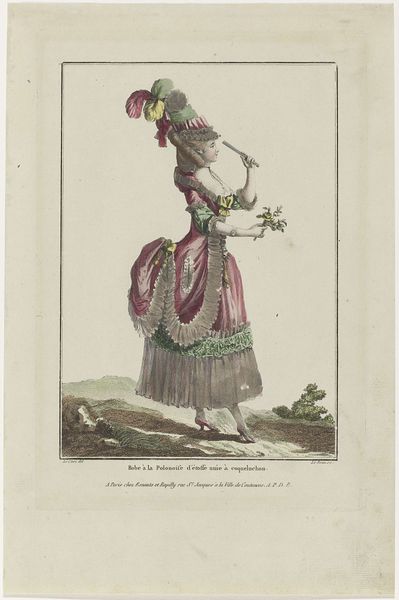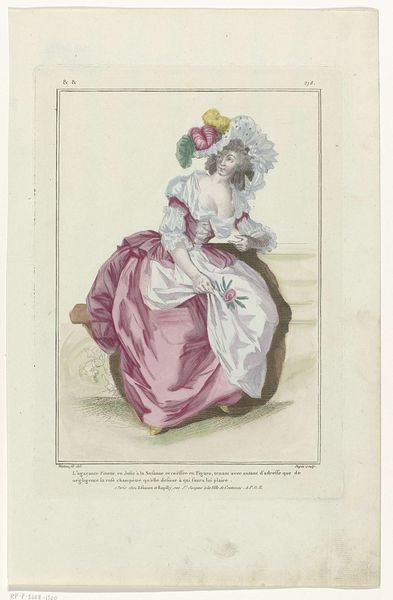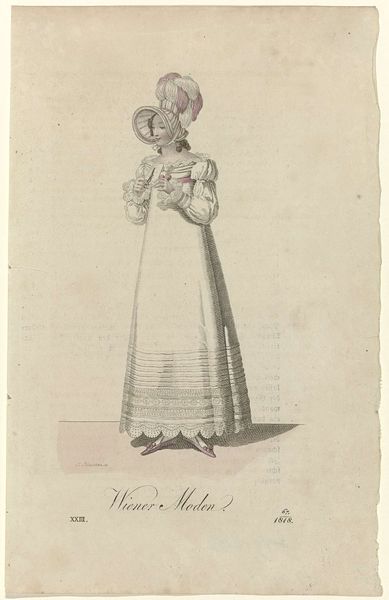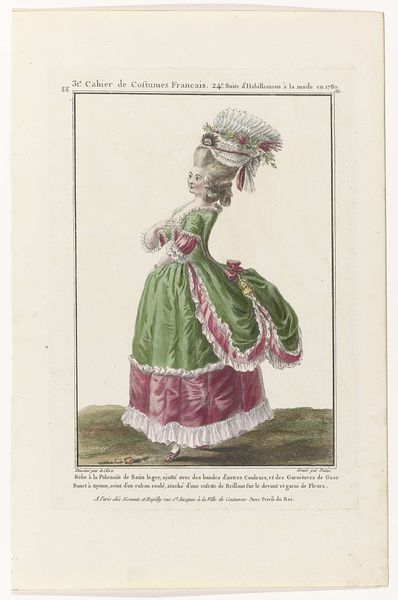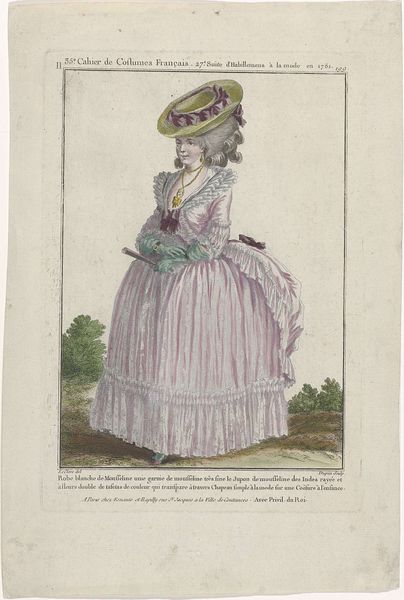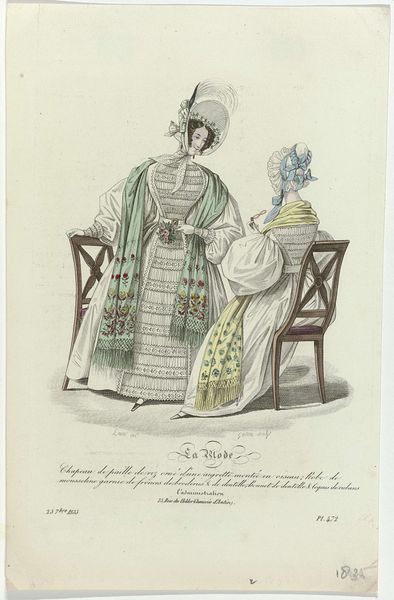
Gallerie des Modes et Costumes Français, 1778, L 64 : Jolie Femme en deshabillé galant (...). 1778
0:00
0:00
Dimensions: height 277 mm, width 193 mm
Copyright: Rijks Museum: Open Domain
Editor: Here we have an etching from 1778 by Etienne Claude Voysard titled, "Jolie Femme en deshabillé galant…". It depicts a fashionable woman with a dog, rendered in delicate watercolor. I’m immediately struck by the extravagance of her outfit – particularly that towering hat! What do you see in this piece? Curator: This image speaks volumes about the societal structures and gendered expectations of 18th-century France. Beyond the Rococo aesthetics, what interests me is how it visualizes constructed identity and class performance. What does it mean to present oneself in "deshabillé galant" – a state of undress that is, paradoxically, highly stylized and deliberately artificial? Editor: I hadn’t really thought about it that way, it just looks pretty! But the "undress" is so formal. Curator: Exactly! It's a performance of intimacy and accessibility that reinforces social hierarchies. This aesthetic allows the aristocratic woman to display her body, wealth, and taste. Also, what role does the dog play? Consider how the dog becomes an extension of her persona. What does this dynamic suggest about women's status, property, and freedom during this period? Editor: So it’s not just a pretty picture, it's communicating power dynamics? Curator: Precisely. And the title itself positions her as an object of the gaze, a "pretty woman." But let’s also consider the artist. Whose gaze are we really seeing? What kind of agency might the depicted woman have possessed within the constraints of her social role? Editor: It's amazing how much context is packed into a single image. I'll never look at Rococo fashion the same way again! Curator: Hopefully you'll think more critically about the messages behind all images! The everyday can say a lot.
Comments
No comments
Be the first to comment and join the conversation on the ultimate creative platform.
